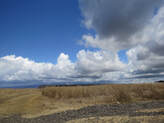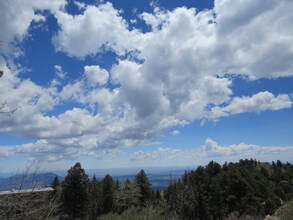 When I taught Scripture to high school freshmen I began the Old Testament portion with a lesson which was intended to help them understand that the Scriptures are the Word of God, but that in getting the message across the writers were affected by the cultural/historical period in which they lived. Although the writers were inspired by God, they could only write through the lens of their own culture, era, personal limitations and talents. However, what was important was not the medium through which the message came, but rather it was the meaning within it. An example that helped was that of a group of blindfolded people who were asked to describe something put before them. One said whatever it was, it was small, thin, and bristly; the second disagreed, saying it was too large to get one’s arms around; another described it as wiggly, wet, and warm; another said it was indeed wiggly, but although soft, it was dry, not wet; and the last said it was hard and unbending. Though their messages were so disparate, all spoke the truth. The thing before them was an elephant with each of the ‘witnesses’ stationed at a different part of the great creature; therefore what they experienced was indeed truth, but each had a different, limited perspective. Together they had a better understanding of the elephant, while alone they could not even agree, let alone correctly assess what it was. Of course, our infinite God cannot be fully known, but the fact remains that each perspective of a particular writer contains truth; descriptions and titles for God are far from exhaustive, but they can offer insight. Therefore, it is important for us to realize that there is always more to the reality we perceive before us, and there is always more contained within every relationship we have, especially in the one we have with God. There is always more.* 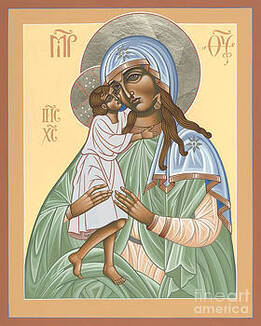 That there is more also holds true for the Blessed Virgin Mary. In life, Mary’s participation in the will of God involved so much more than she could have fathomed, but with courageous trust and in great love, she gave all she could, offering herself to God each day. After living a full life of many joys and sorrows while praying, pondering, accompanying Jesus, and serving, Mary died. But because of her role and the way she humbly did the will of the Father, God gifted Mary with the immediate reunion of her body and soul after the moment of her death, assuming her into Heaven. Since her Assumption, Mary has continued serving God through her care for us, her children. She intercedes when we call upon her in our need, offers assistance for avoidance of sin, perseverance in trials, and growth in holiness, calling us to work with her for the good of the world. With Mary, there is always more she desires to offer her children. 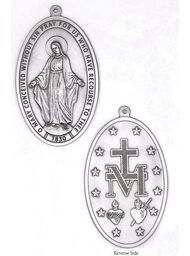 Just as with the writers of Scripture, so, too, has Mary come in different ways to people living in various cultures at particular moments in time, adopting their language and dress, always with messages of care. She has come with tidings of healing and hope, and sometimes in warning with instructions for reparation of sin so that worldwide disaster might be averted. Thus, those who love her began honoring Mary through devotions related to her appearances (Our Lady of Guadalupe, Our Lady of Lourdes, Our Lady of Fatima, etc.) or one of her particular characteristics/realities, (Immaculate Conception, Mother of God, Our Lady of Grace, Our Lady of Prompt Succor, Queen of Heaven, Mother of the Church, and so on),** calling upon her for assistance under these titles. She is indeed all of them, and more. There is always more. 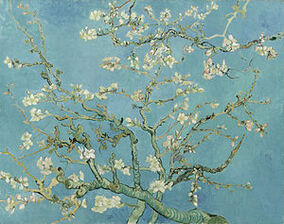 As with her earthly life and in all the devotions we have, Mary teaches us that there is so much more we can do in listening to God and responding to His call in the way in which it is presented to us. But she also teaches that we are greater than the sum of our ‘parts:' just as there are many facets to Mary, who she is and the way she serves God, there is more to us than meets the eye as well. Regardless of what we can or cannot do, what talents or material treasures we have, there is far more within us than is often visible. God is aware of what is deep inside our hearts, and in truth there is greater giftedness and worth in each of us than we often realize. This is true of what we see in others, as well: there is always greater beauty to discover. Indeed, there is always more.  We can look to Mary, our mother who cares profoundly, for protection, assistance, comfort, or nurturance of our path to holiness. Is there a particular title or devotion to Mary that draws you? If so, under that title ask for her assistance with your needs and those of the world. Remember, our call is not necessarily reserved to the work of service, but it is also a call to growth in love and example: it is a call to become more who we were meant to be by God through prayerfulness, kindness, humility, mercy, and a desire to serve the Lord. It is not about quantity, but rather it is about the quality of our love: that is ‘the more’ to which we are called, and through it we will discover greater depths within God’s love. Of that, there is always more. May we give thanks for the gift of our Mother Mary and for her Assumption, a reminder that there is always more! May we accept Mary’s invitation to continually discover our call and the depths of grace which inspire us! And may we be attentive to Mary as she always leads us to her Son, Jesus! Let us meet in the hearts of Jesus and Mary! Peace! ©Michele L. Catanese * I am writing as someone immersed in Ignatian spirituality, so I cannot omit saying that behind all of this is the concept of magis, loosely translated as ‘the more.’ What it refers to is not necessarily quantity, but that we are always called to the greater: to go further, to give greater service, to aspire to greater holiness and greater relationship with God. There is no room for hubris in the magis; it is solely focused on God that we might know, love, and serve Him better. ** If you want to see a longer list of titles for Mary see https://secularfranciscansusa.org/wp-content/uploads/Titles-of-the-Blessed-Virgin-Mary.pdf Images: 1. My photo, taken while hiking in the Sangre de Cristo Mountains outside of Albuquerque, NM. 2. Icon, Mother of God Seeker After the Lost, by Fr. William Hart McNichols. If you are interested in purchasing a copy in one of many mediums, it can be found at fineartamerica.com/featured/mother-of-god-seeker-after-the-lost-170-william-hart-mcnichols.html 3. Drawing, The Miraculous Medal. While I love so many Marian prayers, this is one of my favorites because it is what Mary told St. Catherine Labouré to have put on the medal. Therefore the prayer came straight from Mary: "O Mary, conceived without sin, pray for us who have recourse to thee." 4. Painting, Almond Blossoms by Vincent van Gogh, 1890. https://en.wikipedia.org/wiki/Almond_Blossoms#/media/File:Vincent_van_Gogh_-_Almond_blossom_-_Google_Art_Project.jpg 5. My photo, fog in Bar Harbor, Maine. I chose this because as with all things, there is more here than meets the eye. There is always more! Note: In compliance with GDPR rules, I wish to make it clear that I do not gather any information on any of my readers at any time. Comments are closed.
|
Heart Speaks to Heart
|

 RSS Feed
RSS Feed
